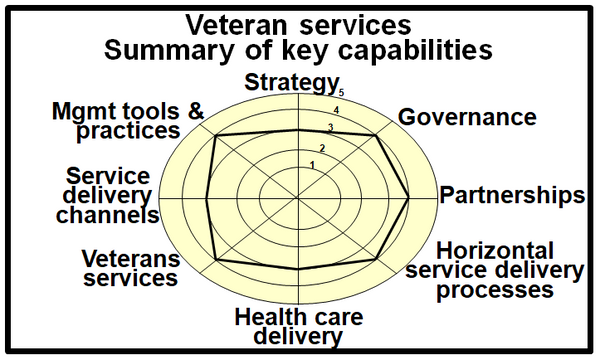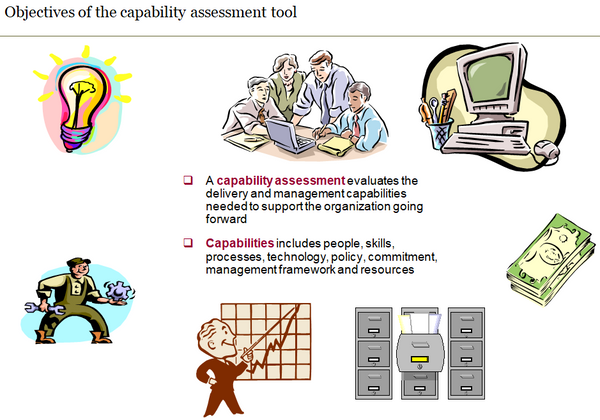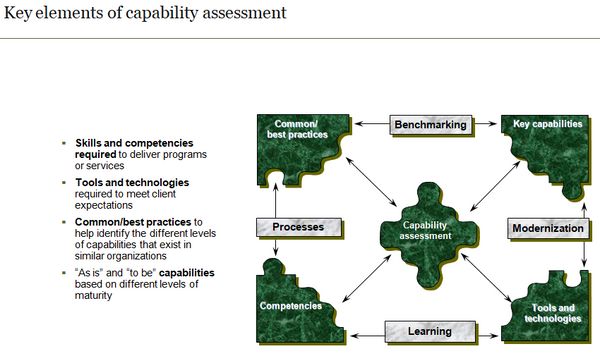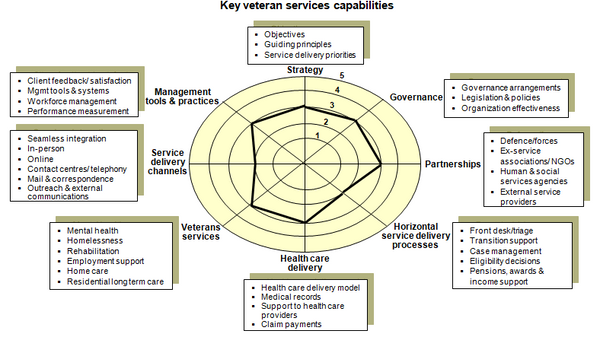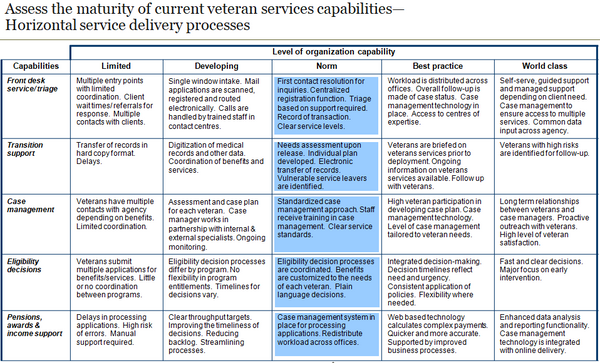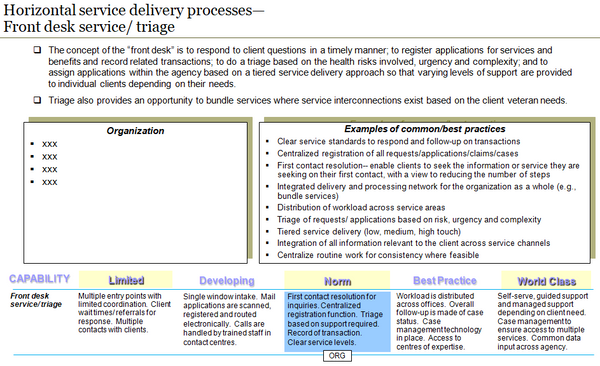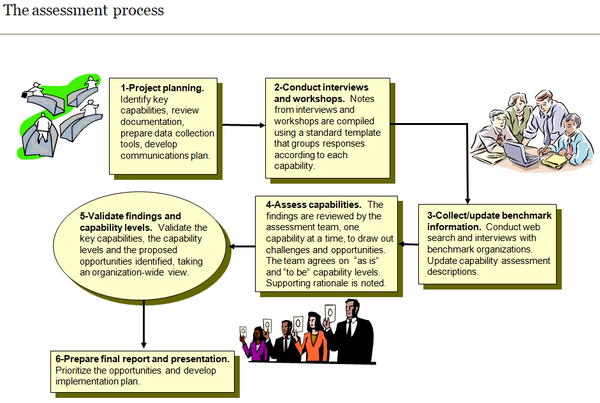Veteran Services Capability Assessment Tool (56 slides)
What key capabilities are required to successfully deliver veteran services? To what extent does a veteran services agency have these capabilities?
In a capability assessment, the key capabilities required of the organization are identified. The capabilities are then assessed based on different states or plateaus that the organization may strive to achieve based on generally recognized common/best practices.
Veteran services capability maturity model
The veteran services capability assessment tool (56 slides in PowerPoint) contains:
-
Suggested key capabilities for the delivery of veteran services (34 capabilities in total) (see preview charts)
-
Capability maturity model based on a five level scale for each key capability (see example)
-
Common/best practices by capability and a template to summarize the results of the capability assessment of a veteran services agency compared to common/best practices (see example chart image)
- Capability assessment work plan (see chart image of work plan summary).
Acquire this tool and you will receive an email with a link to download the tool (56 slides) in a PowerPoint fully editable format, as well as the Capability Assessment Guide (15 pages) in a Word format.
Key veteran services capabilities
-
Strategy--objectives, guiding principles and service delivery priorities
-
Governance--governance arrangements, legislation and policies, and organization effectiveness
-
Partnerships--with defence/forces, ex-service associations/NGOs, human and social services agencies, and external service providers
-
Horizontal service delivery processes--front desk/triage, transition support, case management, eligibility decisions, and pensions, awards and income support
-
Health care delivery--health care delivery model, medical records, support to health care providers, and claim payments
-
Veterans services--mental health, homelessness, rehabilitation, employment support, home care, and residential long term care
-
Service delivery channels--seamless integration of delivery channels, in-person, online, contact centres/telephony, mail and correspondence, and outreach and external communications
-
Management tools and practices--client feedback/satisfaction, management tools and systems, workforce management, and performance measurement.








